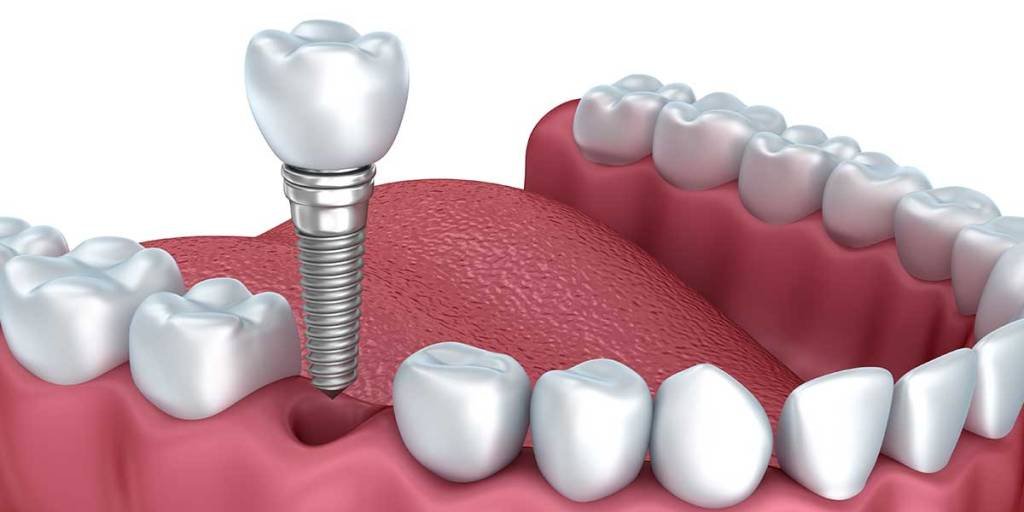“All the adversity I've had in my life, all my troubles and obstacles, have strengthened me... You may not realize it when it happens, but a kick in the teeth may be the best thing in the world for you.”
DENTAL IMPLANTS
We provide implant placement and restorations.
Dental implants are considered the gold standard for tooth replacement due to their durability and natural appearance.
Implants consist of three main components: the titanium implant post, the abutment, and the dental crown. The implant post is surgically inserted into the jawbone, where it fuses with the surrounding bone through a process called osseointegration. This provides a strong and stable foundation for the replacement tooth.
Once the implant has integrated with the jawbone, an abutment is attached to the implant post. The abutment serves as a connector between the implant and the dental crown. It is custom-made to fit the individual's mouth and ensure proper alignment and function.
The final component is the dental crown, which is designed to closely resemble a natural tooth. The crown is typically made of porcelain or a combination of materials, ensuring it matches the color, shape, and size of the surrounding teeth for a seamless smile. The crown is securely attached to the abutment, completing the tooth replacement process.
Dental implants offer numerous advantages over other tooth replacement options. They provide excellent functionality, allowing individuals to bite, chew, and speak naturally. Moreover, they help maintain the integrity of the jawbone, preventing bone loss that can occur with missing teeth. Dental implants are long-lasting and can potentially last a lifetime with proper care and oral hygiene.
Implants can also be used as support as part of an implant bridge. This is an alternative to partial dentures, and has several advantages. First, there is no adjustment period to acclimatize the patient who, once the work is done, only feels teeth and no metal supports intruding into the mouth. Second, this slows the bone loss occasioned by missing teeth. Third, there is no discomfort or difficulty in eating. And, best of all, of course, they don't have to be taken out all the time.
BRIDGES
This is an option for filling the space created by a missing tooth. It is formed to look like the missing tooth, and it takes its place in the mouth. The sides of a bridge use the two surrounding teeth for support, hence the name. A bridge replaces the missing tooth, both functionally and cosmetically. Bridge work is as much an art as it is an exact science. The materials used may be gold alloys, porcelain bonded to metal alloy, or all ceramic material. The choice of material depends on requirements for strength, wear, and/or esthetics.
It is important that a missing tooth be replaced as soon as possible for several reasons. If not treated the teeth surrounding the gap begin to shift inward, creating a whole chain reaction of bad things. Teeth use their neighbors for support, and, with one missing, they start to "fall." As this worsens the bite changes in response to the pressure. This can eventually result in problems with the entire jaw, e.g. TMJ. The surrounding teeth deteriorate and it is just a matter of time before they, too, are lost. Gum disease becomes a serious problem, and the difficulty of treatment increases as time passes.
DENTURES
There are different types of dentures, but they share their common function. They replace multiple teeth that have become loose or have been lost for other reasons. When bone loss around the roots of teeth is great enough to loosen them or let them fall out, it's time for dentures; either partial or complete. Relax. No one enjoys losing their natural teeth, but you can still eat and talk regularly.
The entire mouth is examined and a determination is made as to which teeth will have to be removed, and which will remain. The loose teeth are then extracted. Dentures are fitted to go over or around whatever teeth remain in the mouth, depending on the type. There is an adjustment period after dentures are placed in your mouth, and it can take some getting used to. But once accustomed to the dentures, a normal functionality and appearance return and one just carries on as usual. Often implants can be used to further stabilize the dentures.



